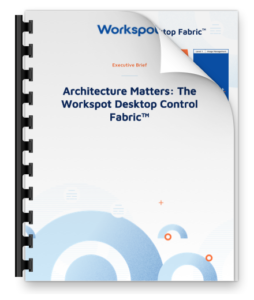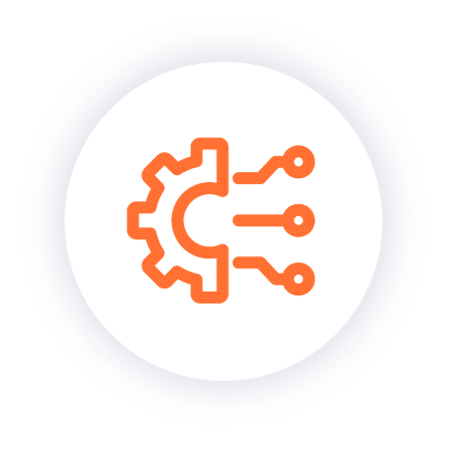Cloud PCs Are In, The Office Is Out. Here’s Your Guide to Enable Anywhere-Productivity.
Momentum for remote working has grown steadily over the years, and it really began accelerating as Millennials entered the workforce with a determination to avoid being chained to an office desk. Some industries have embraced remote working more than others, with software developers and IT leading the way. However, even within more progressive industries, there have been skeptics who still believe that the only way to be effective is face to face. With the great remote working experiment underway today, it looks like the skeptics are coming around, because overall sentiment seems to be that remote working works – and it’s good for everyone, including the business’ bottom line. Personal optimism on working from home effectively is running at 65% according to LinkedIn’s recent Workforce Confidence survey. So what’s the best way to enable anywhere-productivity? What are the primary considerations for CIOs, CFOs and CISOs?
C-Suite Conversations: How to Securely Enable Anywhere-Productivity?
Right now, every C-level leader is exploring options for supporting remote work effectively. If this recent Gartner survey is any indication, they are taking a long-term view of this transition. Gartner discovered that 74% of the CFOs surveyed stated they planned to transition at least part of their workforces to permanent remote working. It seems clear that beyond the immediate need to support remote work, organizations are taking a hard look at the costs associated with real estate and other costs that might be streamlined for greater efficiency. CIOs have an interest in divesting on-premises infrastructure too; many have cloud-first strategies that are returning attractive ROI already. A recent survey by the Enterprise Strategy Group (ESG), found that “58% of organizations believe that Desktop as a Service (DaaS) could become the primary means of desktop consumption and delivery.” They also found that “current DaaS users have aggressive expansion plans.” Similarly, CISOs are asking tough questions about how their security posture changes with the shift to remote work – as they should. Virtual desktop solutions have always been known for improving security over the use of physical PCs, but are some virtual desktop solutions more secure than others? With these complicated requirements across leadership teams, what’s the best path forward?
Critical Considerations for Anywhere-Productivity Solutions
As you weigh solution options, there are a five essential requirements that surface repeatedly when we speak with IT leaders. Exploring what’s possible requires an understanding of each solution’s architecture. What are the limitations? Are they acceptable? Will your implementation be future-proof as technology evolves and your needs change?
Is the solution simple to deploy and manage?
There are a couple of factors to consider when it comes to simplicity. The first is time-to-value. How long does it take to deploy the solution? What in-house skill sets do you need on your IT team to get the job done? Can you be up and running in time to address your immediate needs for remote work? Secondly, there is the ongoing management of the solution. What’s the opportunity cost of allocating IT resources to manage the solution? It’s critical to think about the ongoing management and maintenance costs over both short and long term horizons.
Is the solution highly secure?
While your organization may have expanded VPNs and other remote access tools to get employees connected as quickly as possible, you and your security team should evaluate whether these are the most secure methods for longer term access. With so many organizations operating on a cloud-first strategy, confidence has grown considerably in the security of cloud computing. However, when considering virtual desktop solutions, it’s the details that matter, and security capabilities vary. We recommend that CISOs ask these tough questions of vendors to get to the bottom of the security capabilities of different virtual desktop solutions.
Does the solution support global scalability? In minutes?
If you have employees in more than one location, you should be able to spin up virtual desktops quickly to respond to dynamic business conditions while still ensuring great performance for your users. And now, more than ever, there will be necessary transitions between working in the office and working remotely. When we refer to global scalability, we’re talking about spinning up virtual desktops on-demand, in minutes, across geographies, and then managing them through a single pane of glass. You can read more here about why you should “think big” when it comes to virtual desktop scalability!
Is the solution cost effective?
Many virtual desktop solution have high up-front costs, including investments in infrastructure, licenses and consultants with special expertise to deploy the solution. It’s also important to consider the ongoing operating costs, and most legacy and cloud VDI solutions are still pretty complex. Complexity is expensive! We describe this problem is more detail in the blog: Flat-Rate Pricing is Key to Cloud PC Success
What about end user experience?
Here’s where I’ll use one of my favorite sound bites: Forget everything you know about VDI. That’s because VDI is notorious for poor performance. This means users will be less productive (and probably super cranky.) The good news is that the Workspot architecture – where cloud desktops can be placed in the cloud region closest to users – has solved this problem. Workspot users can’t believe how great the performance is – even demanding users like graphic designers and CAD/BIM engineers. Getting good performance from VDI is an architecture discussion – dive deep on this one and keep users’ productivity high!
Which Approach is Best?
You have options for sure, and they all have different capabilities. Generally, there are three primary approaches to support remote work: Users VPN into the corporate data center or cloud app, use VDI, or leverage Desktop as a Service (DaaS). For brevity, I’ll point out the major deficiencies you should explore further.
VPNs
Security is one of the biggest issues with VPNs, since users can copy data to their endpoint. Additionally, VPNs are more vulnerable to cyberattacks than VDI or DaaS. With VPNs, IT still needs to manage endpoint logistics and security, and these channels are being overtaxed, resulting in poor performance. A VPN connection is a stop-gap measure, not a path to the future.
VDI
Well known challenges associated with VDI include high capital expenditures, management complexity, difficulty scaling and poor performance. Depending on the workload and the user’s proximity to the data center, it could be fine. But if you’re looking for agility and better security, look elsewhere.
DaaS
Not surprisingly, we believe that Desktop as a Service solutions are the direction in which you should be looking. With the right solution, IT simplicity, amazing performance for users, and more robust security than other approaches can be yours! DaaS comes in different flavors, so let’s explore your requirements and have an architecture conversation. It will become clear how Workspot is totally different, and why it’s the right choice to support remote work, anywhere-productivity, and business growth.




